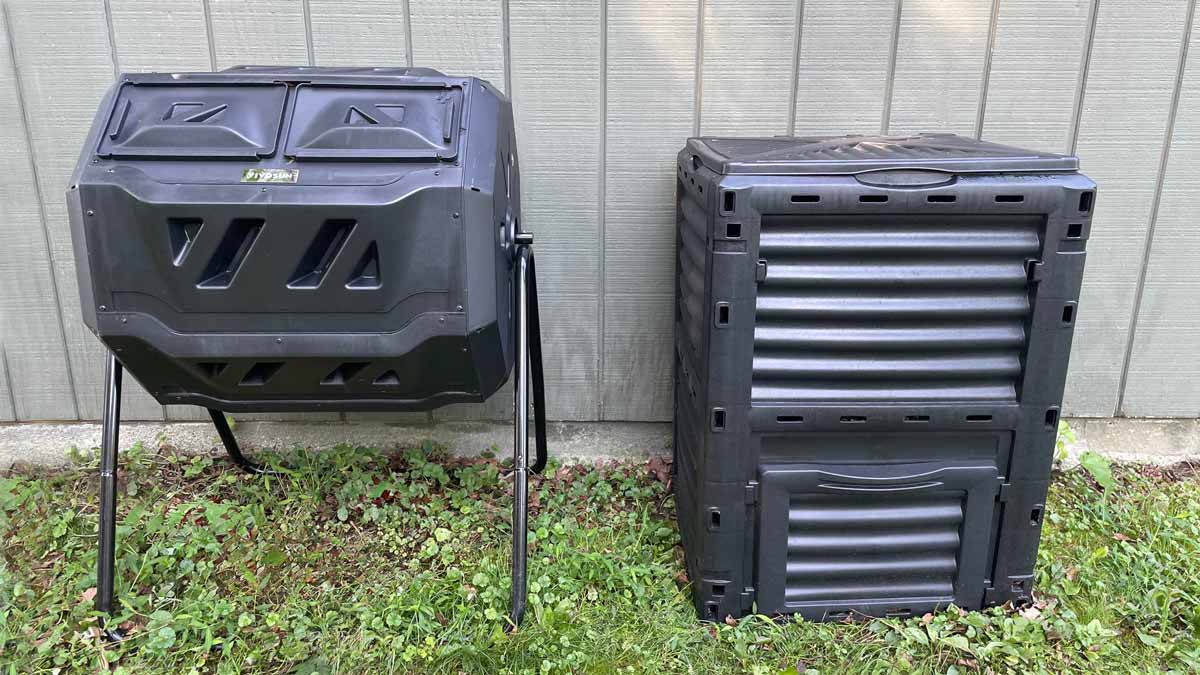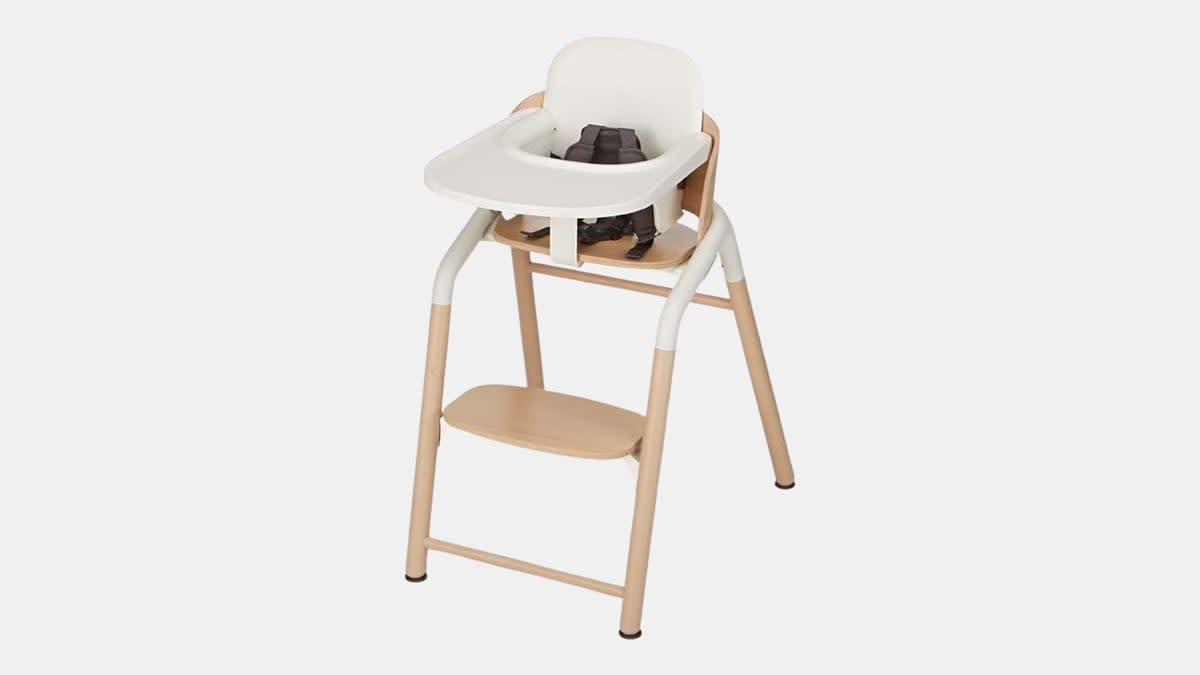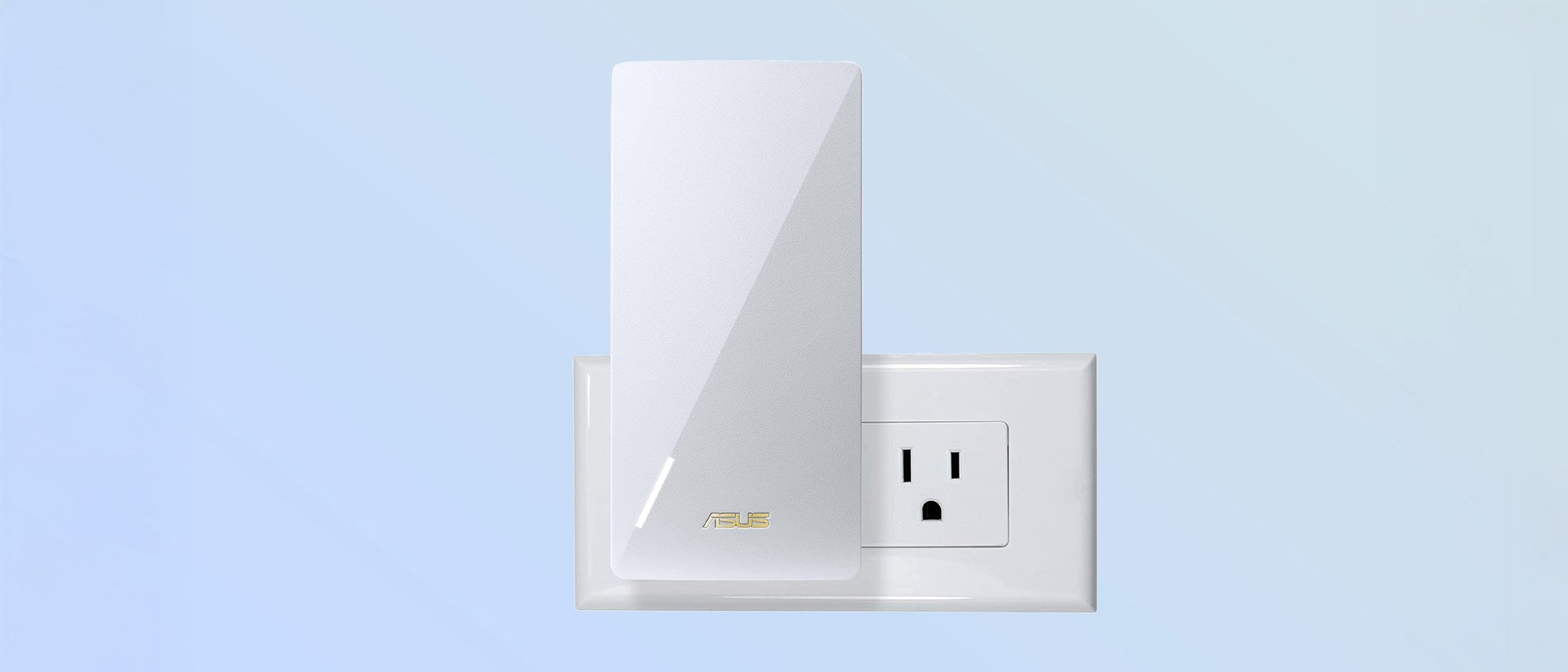Rotating Barrels vs. Box-Style Compost Bins

If you do a quick search for outdoor compost bins, you’ll find thousands of options. Nearly all will be from brands you’ve never heard of, and if I had to guess, they probably all come from a handful of factories and simply get stamped with slightly different names. But the vast majority fall into one of two styles.
The first style is more or less a rectangular box that rests on the ground.
This style typically has a lid on top, like a garbage can, which allows you to add new organic material. This style also typically has a small access door near the bottom of the bin, so you can access compost as it forms. If you want to turn or churn the compost, you lift up the lid and churn the contents with a shovel or pitchfork. Capacities range from about 60 gallons up to 120 gallons. Ours was made by a brand called JupiterForce, and the 80-gallon version we tested sells for about $35.
The second style of compost bin is barrel-shaped and is designed to spin freely, while suspended in a metal frame that rests on the ground. You can tumble the compost periodically to promote even decomposition.
Most spinning models I’ve seen divide the barrel into two separate composting chambers, each with a sliding plastic access door. The idea here is that you can make two batches of compost at once. That means you can start your second batch when the first is halfway formed. Staggering the batches gives you a steadier supply of compost through the gardening season, rather than one giant bumper crop all at once. Most models I’ve seen range from a capacity of 22 gallons up to 65 gallons. My model has a capacity of 43 gallons. It was made by Vivosun, and it sells for about $80.
Naturally, you will find options that don’t fall neatly into either of these two categories. There are tumbler-style models that are perfectly cylindrical, and bin-style models with open sides. You’ll also find totally different styles, including expandable circular bins with slits in the side to promote air exchange.
However, the compost bins I picked are extremely popular models, and are reflective of the most common styles. Their sizes sit squarely in the middle of the range you’ll find when shopping.
Each of the two designs offers some advantages, and the decision comes down to personal preference.
The spinning barrel style is the clear winner when it comes to churning your compost. You can spin it like the Big Wheel from The Price is Right, and the contents tumble together.
However, the spinning versions are usually more expensive than the simple box style—twice as much in my case. And each compartment only holds half as much. The openings are relatively small, so you need to add material one handful at a time. And you can’t really see too far inside, so when you want to clean it out or remove compost, you’re probably just gloving up and hoping for the best.
I prefer the bin style. It works like a bottomless garbage can, with a lid that flips up easily and a design that allows easy access. That makes it far easier to load up with shovelfuls of leaves and grass clippings, though when it’s fully loaded, it can be hard to churn the deep pile of debris, particularly the stuff near the bottom.
The basic idea here is that you can start a compost pile inside the bin, and continue to add more material as needed. The matter on the bottom is the oldest, and will break down first, at which point you can open a small trap door on the front of the box to shovel out the fully formed compost, allowing the next layer to drop down.
Source link











